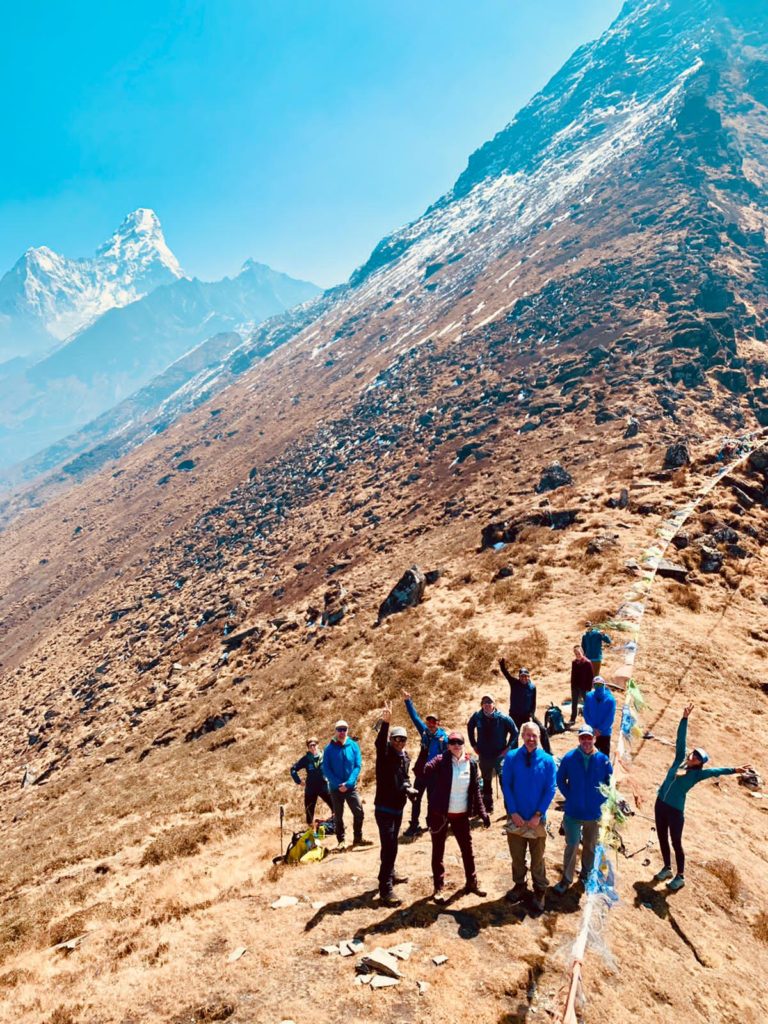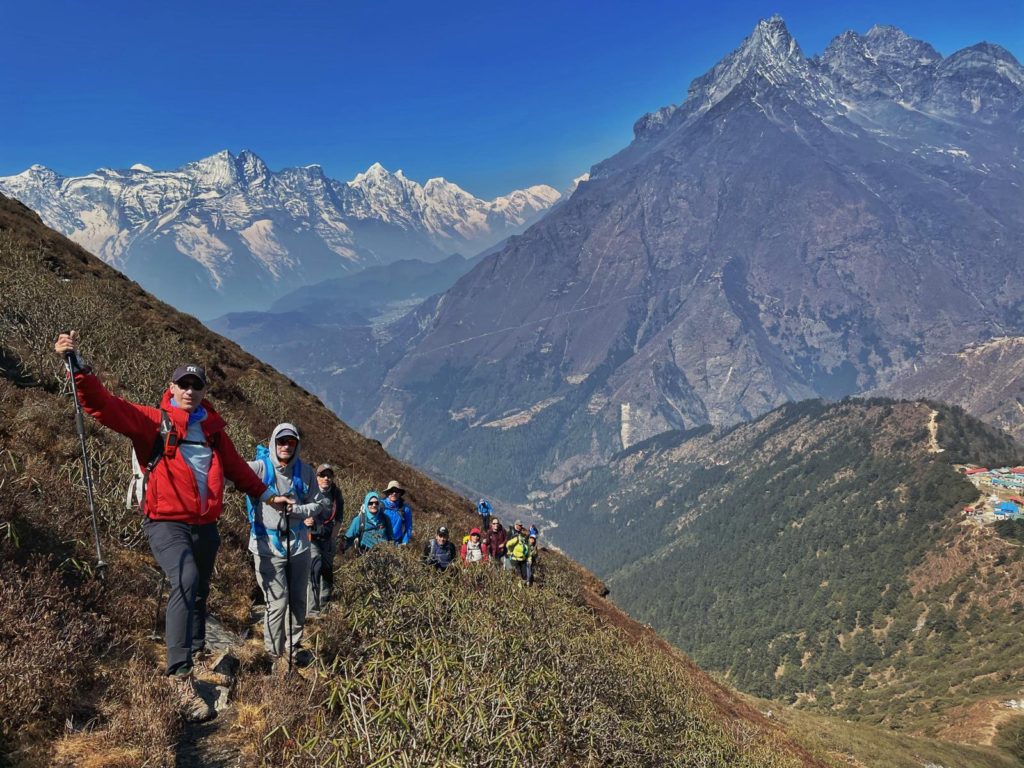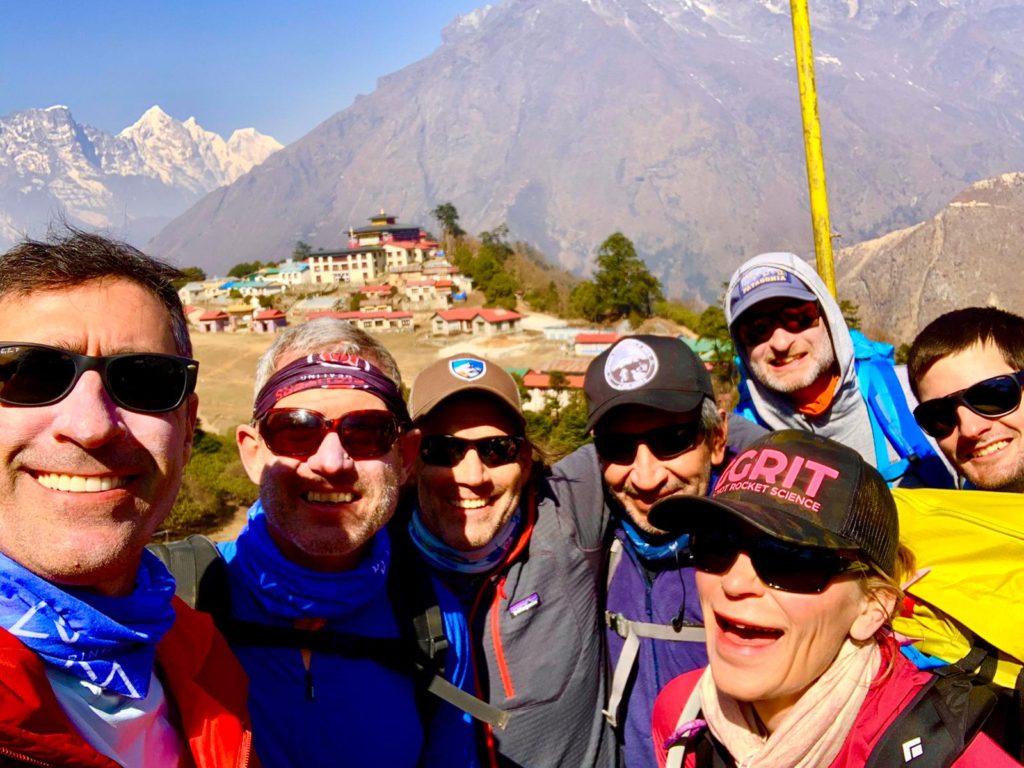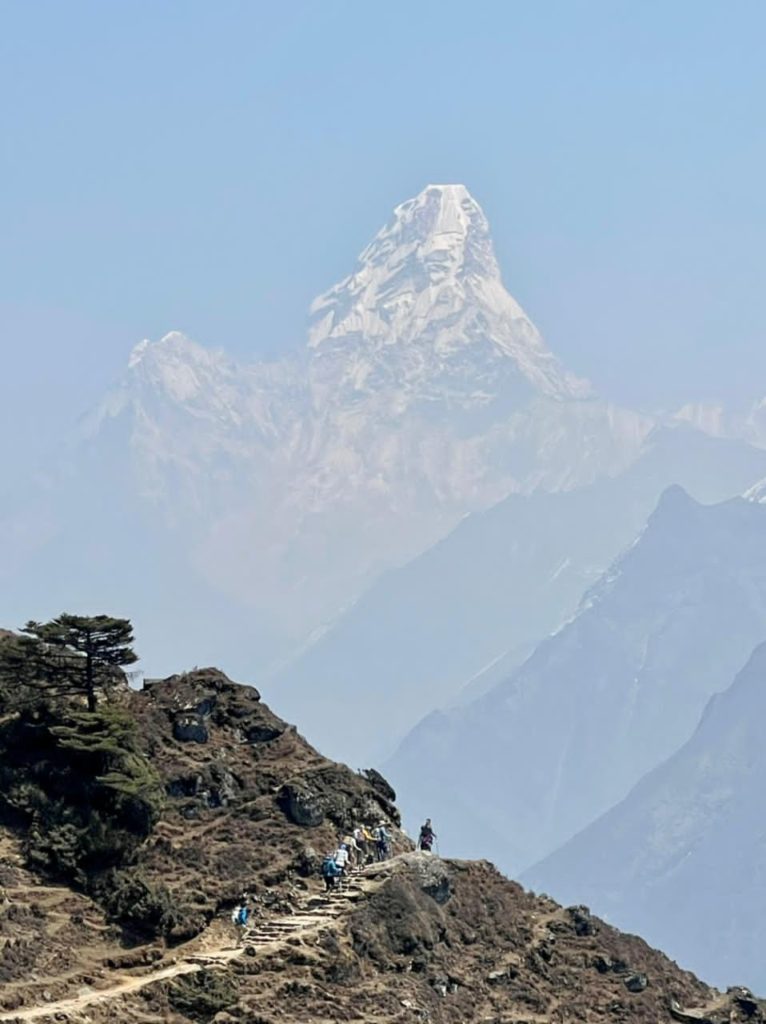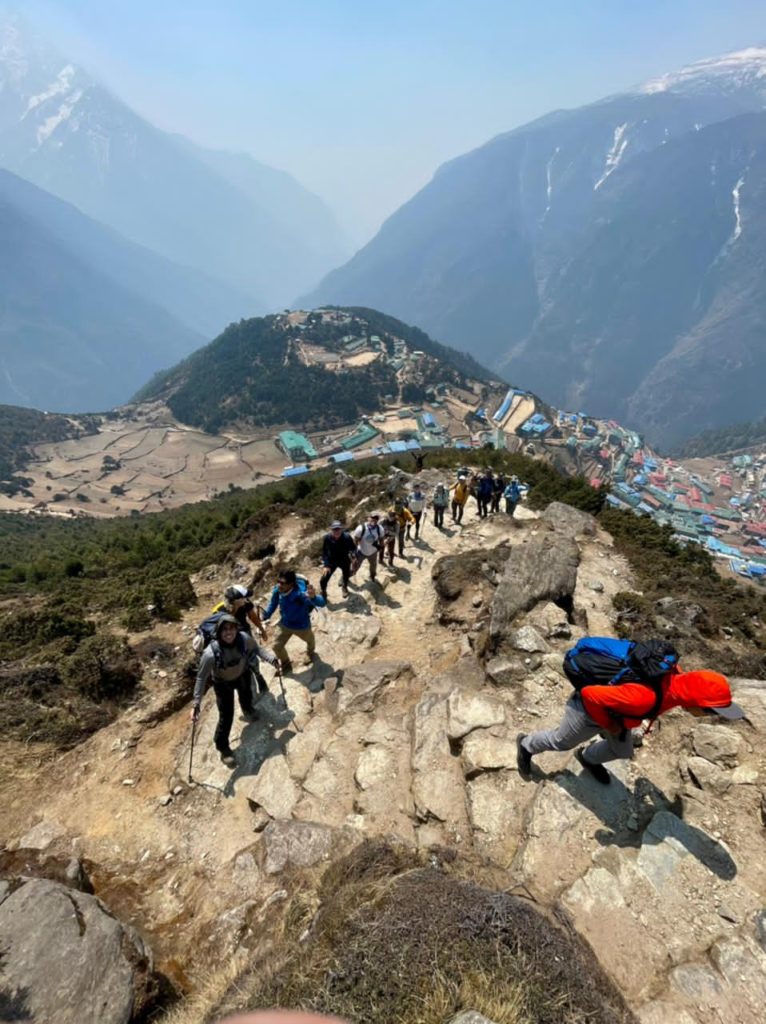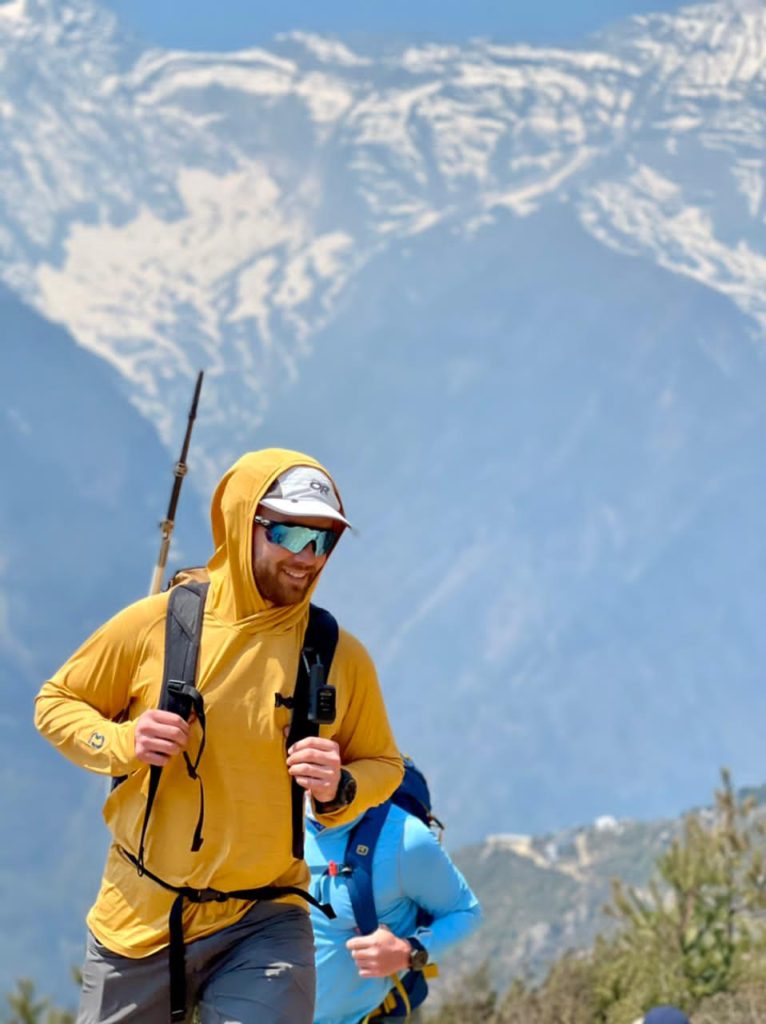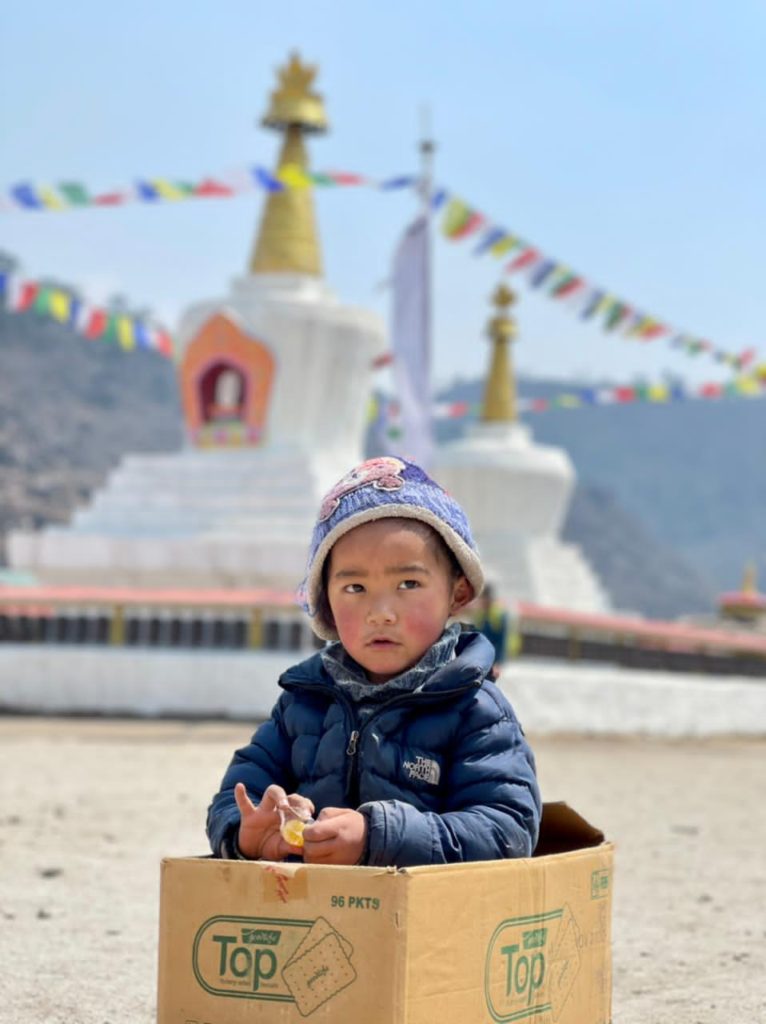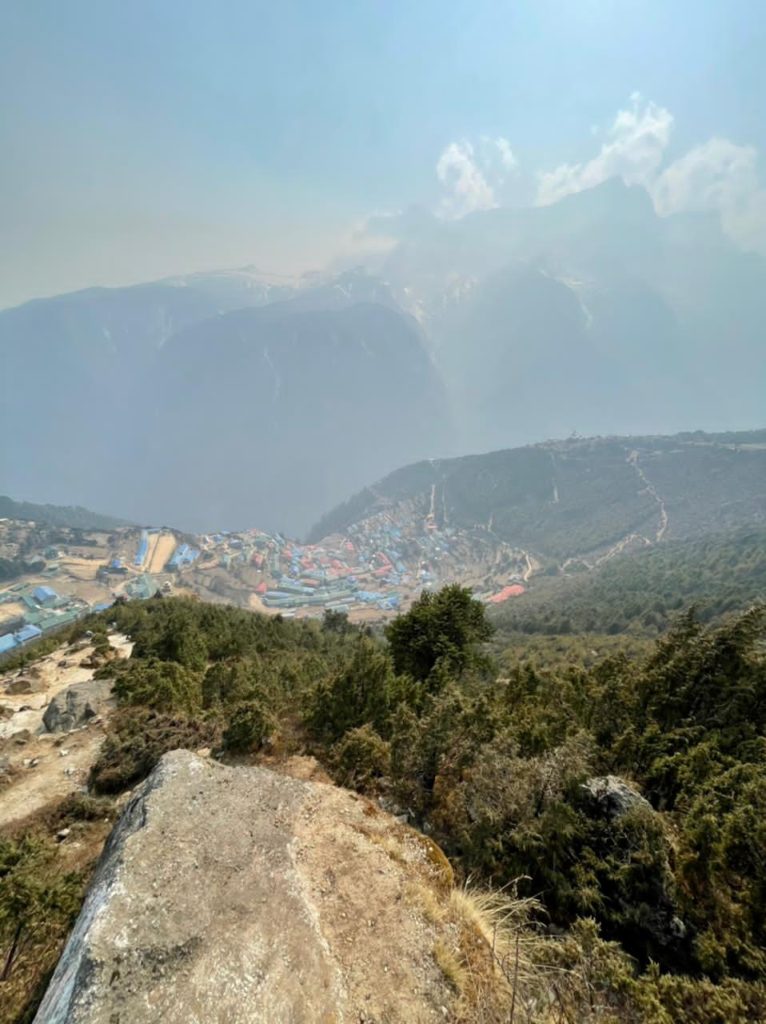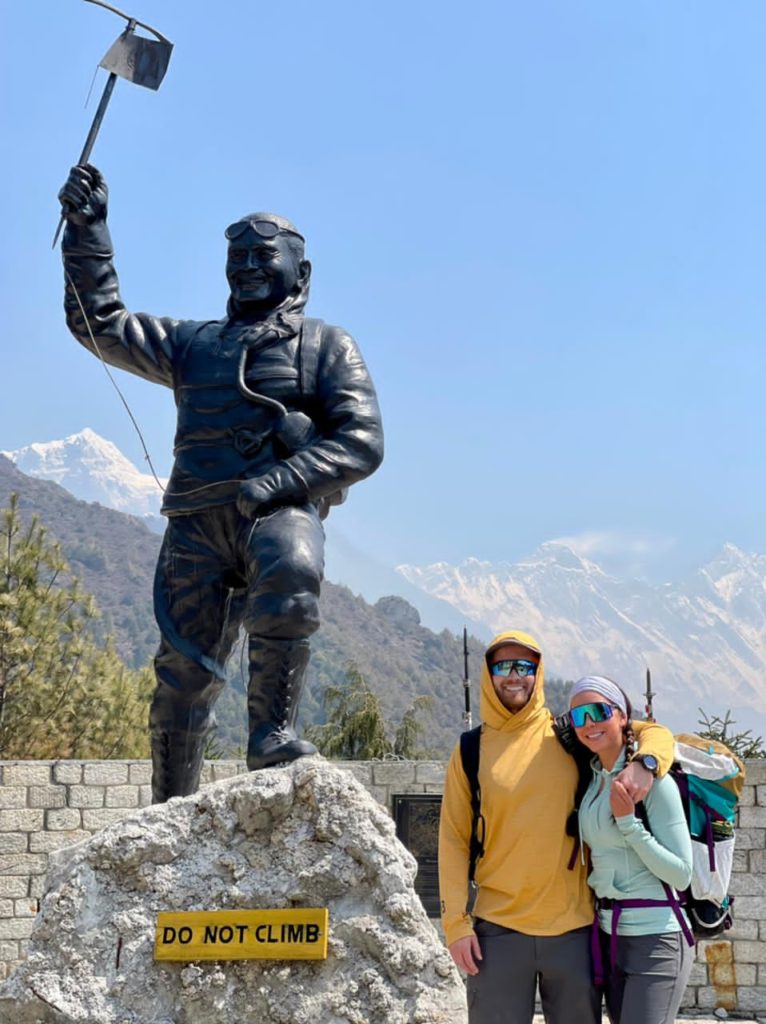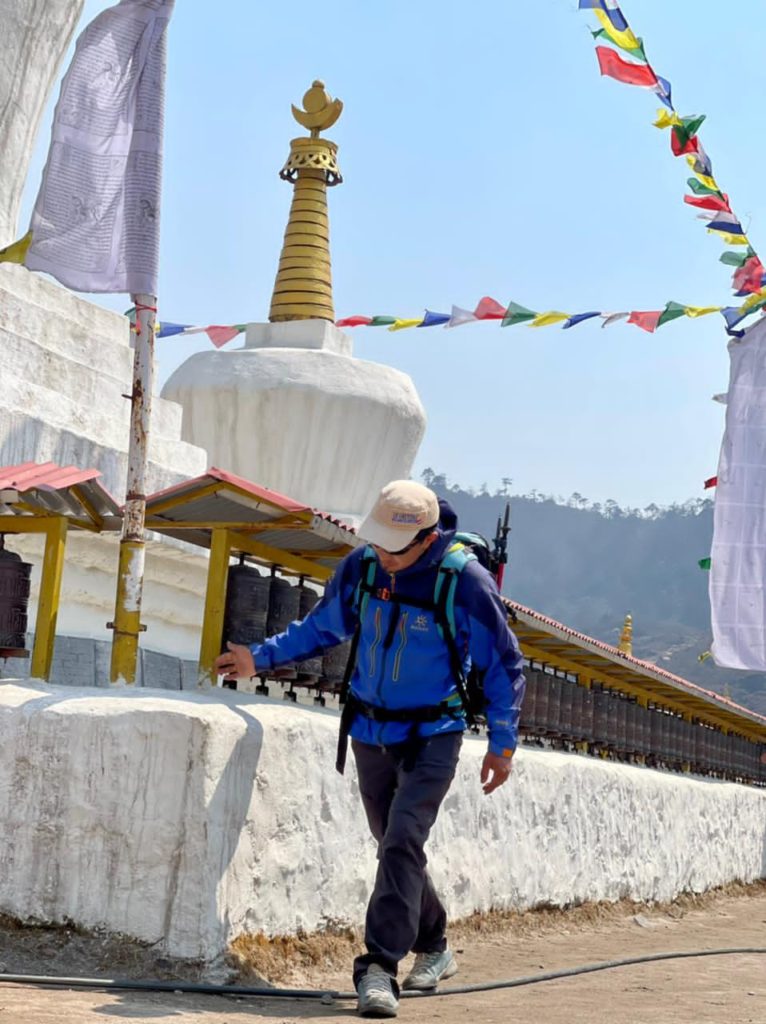Another stunning day in the Khumbu today with most of our climbers taking an acclimatization day (where we ‘climb high and sleep low’. This season you will hear us talk about acclimatization/rotations alot so I’ve detailed the process a bit below but first, let’s catch up with where are our teams are, and what are they up to…
Our Western Guided Team enjoyed an acclimatization day today, hiking high above Tengboche and then returning to Rivendell in Debouche for hot showers and some fixed line practice. Everyone strong and feeling great.
Our Private Guided Team also spent an acclimatization day hiking up to the Everest View Hotel above Namche, taking in some epic views.
And finally, our Personal Sherpa & IFMGA Sherpa Team flew into Lukla safely this morning after a 4:30am wakeup call! They trekked to Phakding today and will move to Namche tomorrow.
A few more Speed Ascent climbers to join us later in the month, but for now, it’s great to be out of town and into the Khumbu! Every mile bringing us closer to Everest.
_____________________
Ins and Outs of Acclimatisation
The purpose of ‘climbing high and sleeping low’ (and once we get to Everest herself, all the ‘up and down’ ‘up and down’ climbing rotations) is to give the body a chance to acclimatize and this is a fascinating process. I’m about to go all biology geek on you so beware (but also a quick disclaimer, I’m not a physician so if this process is a little generalised, forgive me) …
The higher our climbers go the less dense the atmosphere, simply meaning the oxygen molecules in the air are further apart which is why we say ‘thin air’. At sea level, the atmospheric pressure is about 1.04kg per square cm. That’s a nice heavy level of pressure that helps give the oxygen an extra push to pass through the selectively permeable lung membranes and into the blood. However, the higher you go, the lower that pressure becomes and therefore the less likely it is that the oxygen molecules actually pierce through the lung membranes and get themselves into the haemoglobin of the red blood cells where they get transported to the rest of the body.
Think of atmospheric pressure as a giant ‘press’ pushing down on the oxygen molecule and ‘stamping’ it into its seat inside the red blood cell. At higher altitude, that extra assistance isn’t there. On top of that, the oxygen molecules are also further apart so you are less likely to come across as many of them in each breath as you would at sea level. So how does the body make up for it?
At first, there are superficial changes, the body increases breathing rate (to increase the chance of taking in the same level of oxygen but from much sparser air) and your heart rate and blood pressure also increase dramatically (even at rest) to help move more blood (hopefully oxygenated) around your system. The theory is the more you breathe & the more blood your heart pumps, the more chance an oxygen molecule gets to where it’s got to go. Following?
BUT (and here’s where it gets very cool) over time your body realizes it needs to make some more significant adaptations if it’s going to live at altitude successfully so it makes some longer-term adaptations to its efficiency. It increases the number of red blood cells as well as increases your capillaries and even your lung capacity and size. All of this change is to ‘up’ the probability of coming in contact with those precious (but flighty) little oxygen molecules. Understandably, these longer-term changes take time, (it’s tough work for the body) hence why Everest is a patience game and why is takes 10 days to trek the roughly 60kms into Base Camp. By increasing our high point a little more each time, the climbers/trekkers put manageable stress on their bodies, bringing them up to a new threshold and then by taking time to rest, they give their bodies a chance to play catch up and adapt to this new normal.
When our climbers get seriously high on Everest, they’ll go on oxygen which puts more oxygen molecules into their lungs on each breath, (but it still can’t increase the atmospheric pressure of it getting stamped through and into the red blood cells) so climbing Everest is a remarkable feat indeed, not just from a mental strength perspective but also from a physiological one. To put it in perspective, if I were to take you off your chair right now and whisk you away from to the summit of Everest you would pass out within a few minutes and die shortly after. The best example I can think of for how it might feel for our climbers is going to the gym and doing a high-intensity cardio workout whilst breathing through a straw. Tough right?
To snap us out of our impromptu science lesson, here are some sensational pics from the teams today
